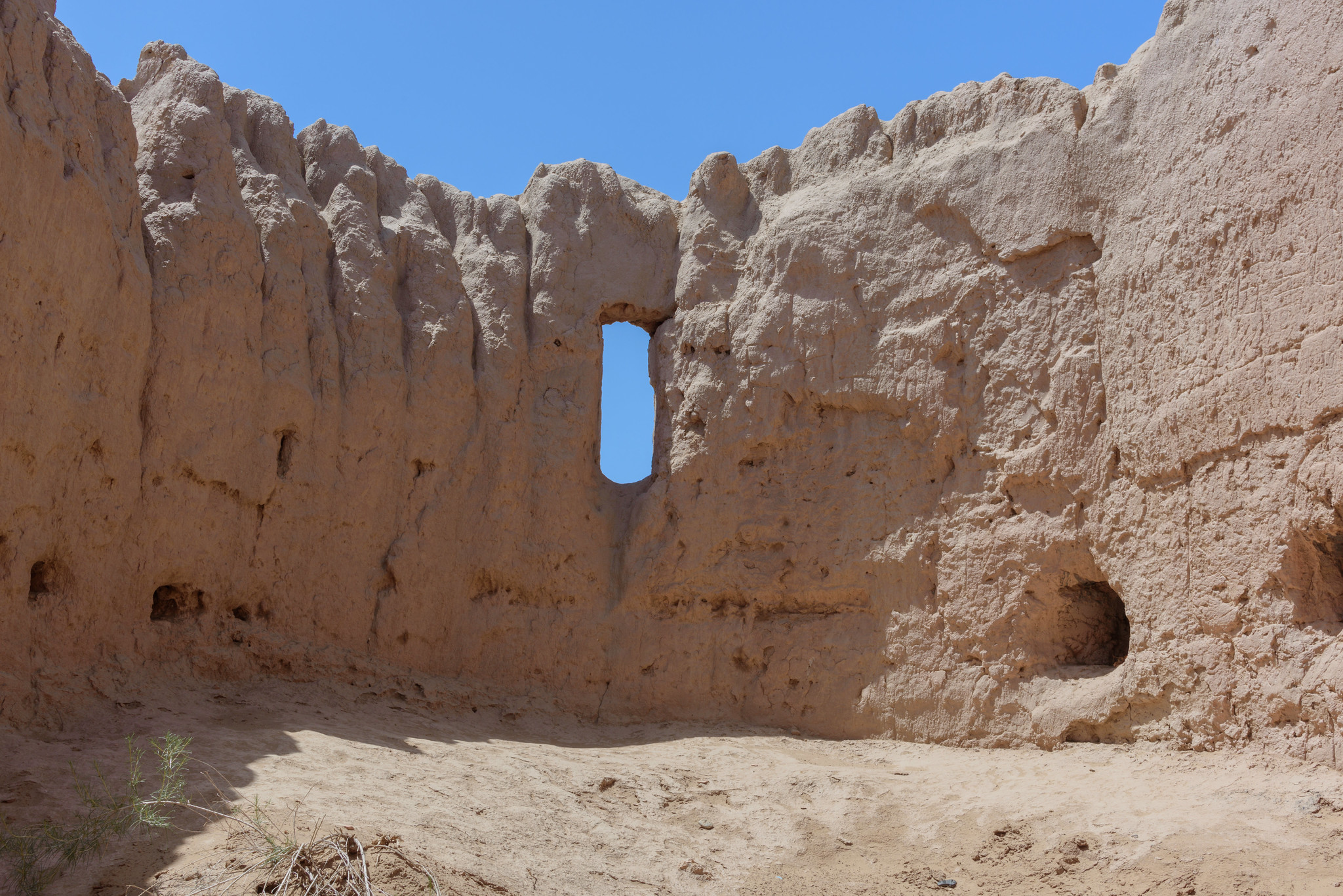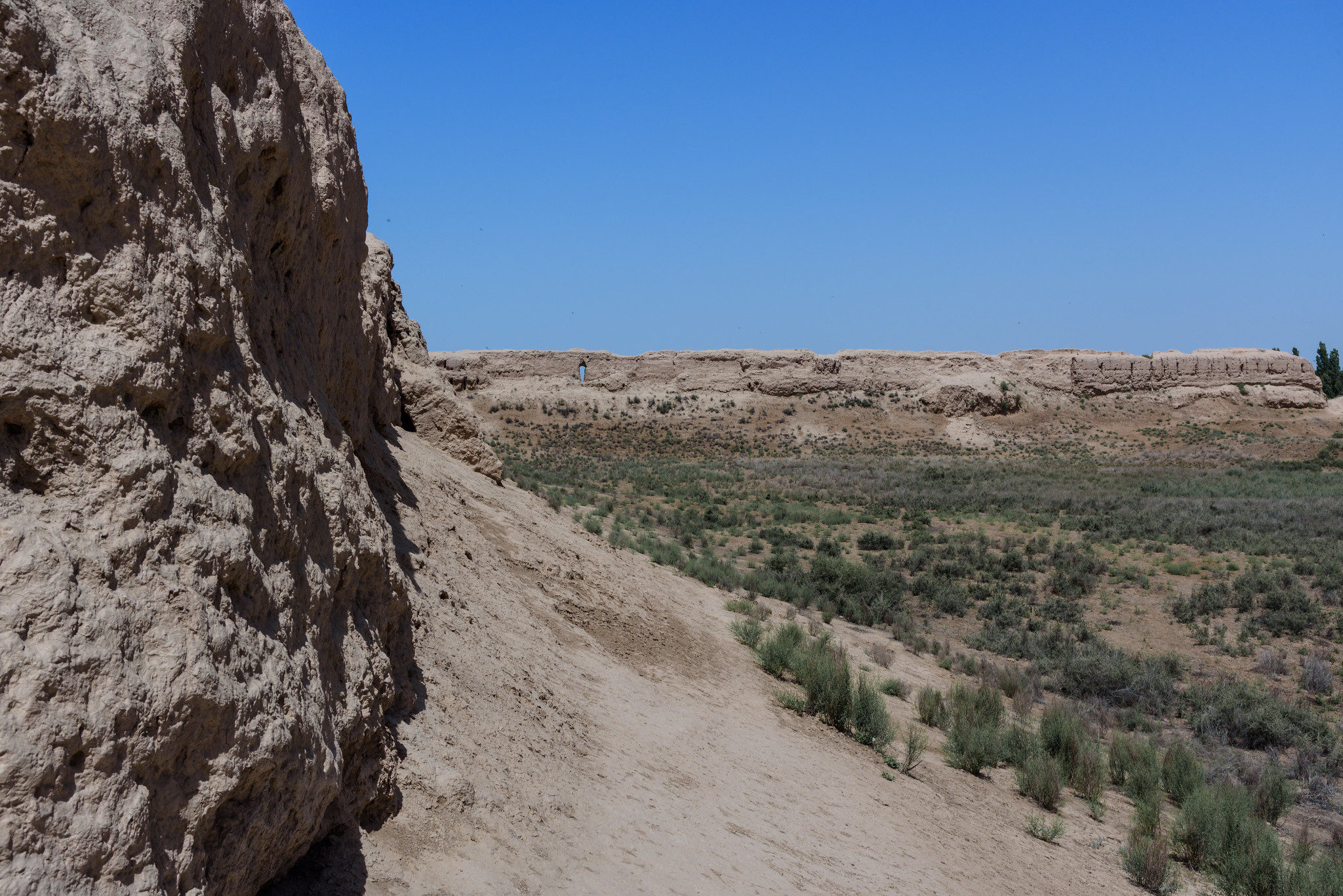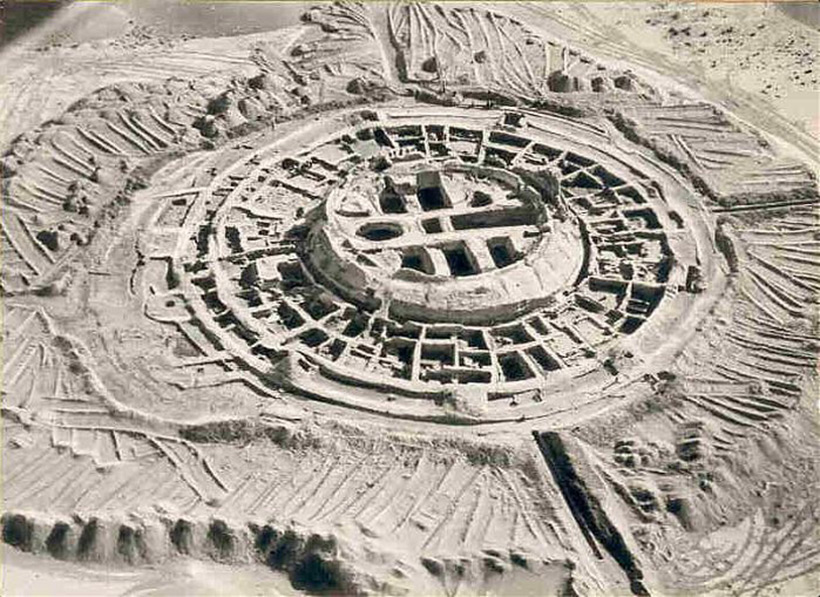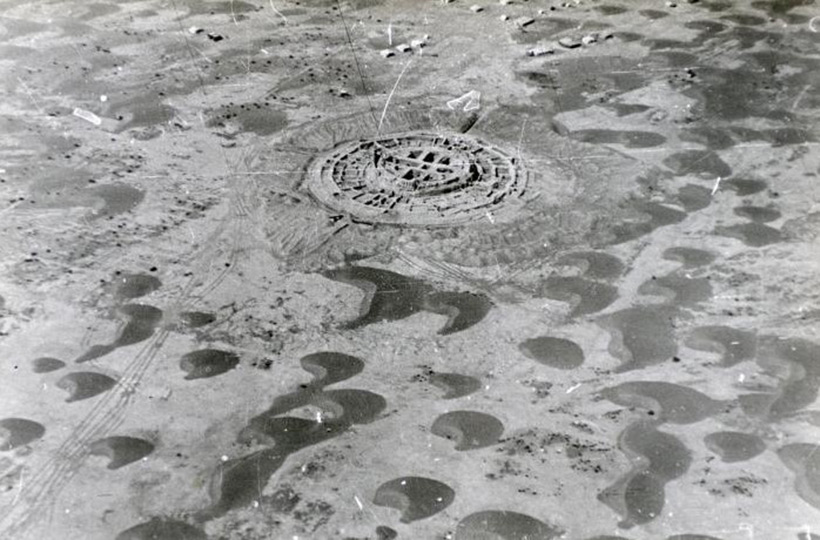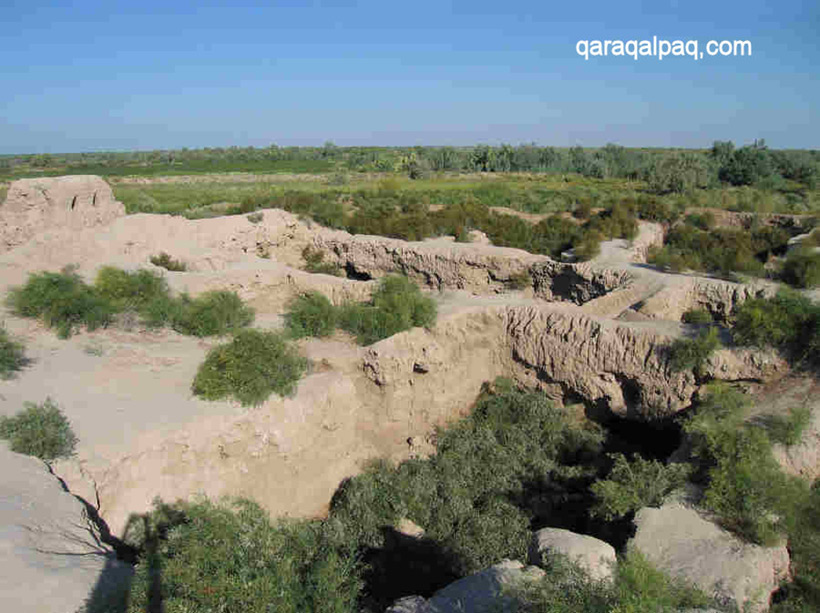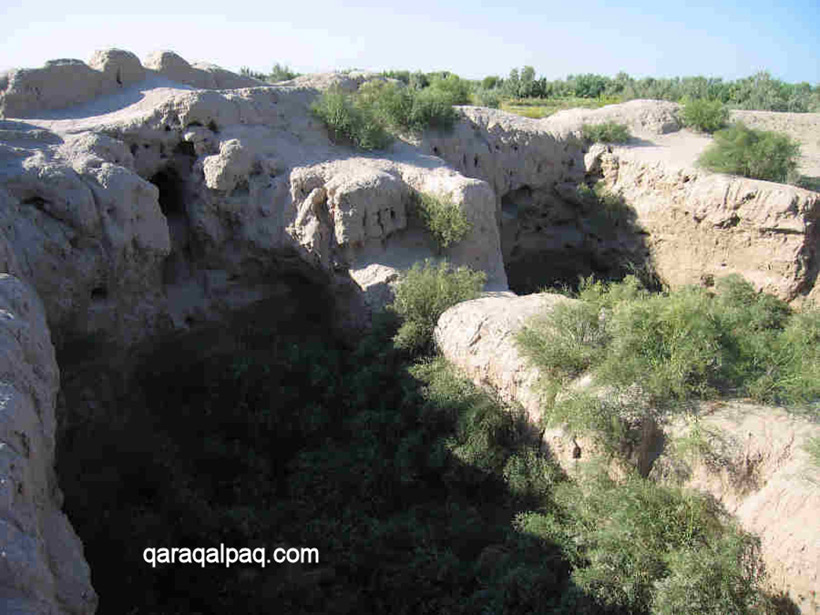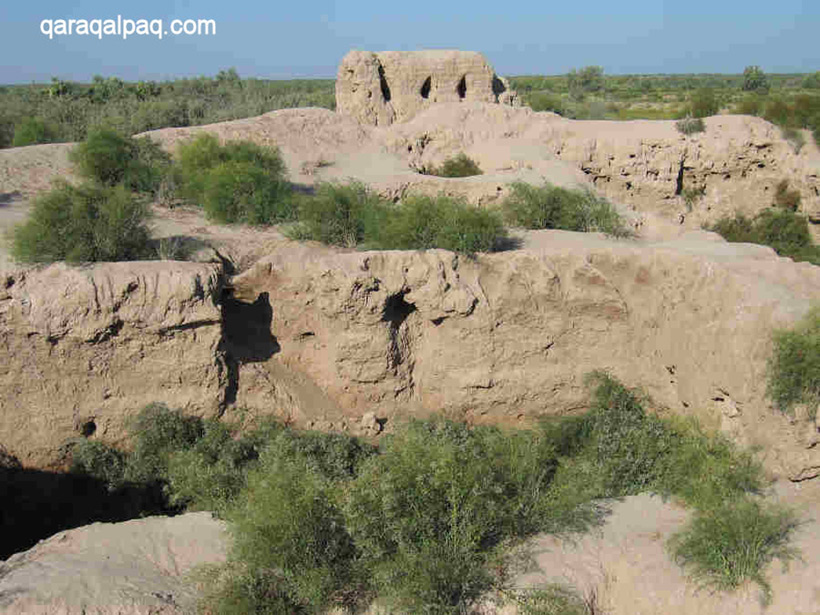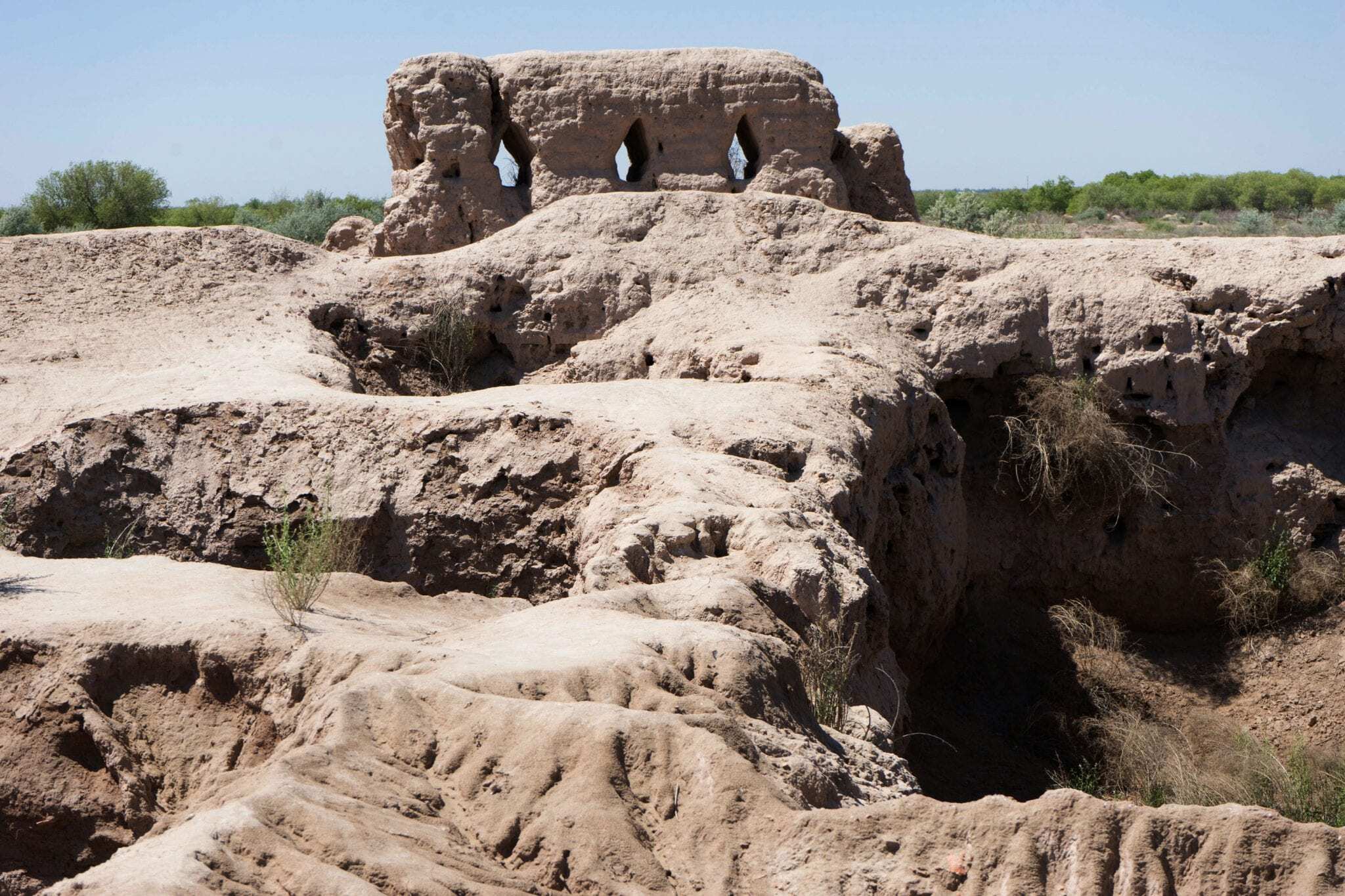遗产数据库
Koy-Krylgan-kala Fortress
摘要: 卡拉卡尔帕克斯坦的科伊-克里甘-卡拉要塞科伊-克里尔干-卡拉要塞,亦称“失羊要塞”,是卡拉卡尔帕克斯坦广阔的霍雷兹姆草原上最引人入胜的考古遗址之一。1938年,霍雷兹姆考古探险队偶然发现了这座要塞,其独特的圆形设计使其脱颖而出,与该地区常见的方形或长方形要塞形成了鲜明对比。这座堡垒以一座中央城堡为特色,城堡周围环绕着装饰有塔楼、呈完美圆 ...
卡拉卡尔帕克斯坦的科伊-克里甘-卡拉要塞
科伊-克里尔干-卡拉要塞,亦称“失羊要塞”,是卡拉卡尔帕克斯坦广阔的霍雷兹姆草原上最引人入胜的考古遗址之一。1938年,霍雷兹姆考古探险队偶然发现了这座要塞,其独特的圆形设计使其脱颖而出,与该地区常见的方形或长方形要塞形成了鲜明对比。
这座堡垒以一座中央城堡为特色,城堡周围环绕着装饰有塔楼、呈完美圆形的防护墙。这座外围防御工事环绕着中央建筑,形成了一个被称为“环”的建筑群。中央建筑直径为42米,保存最完好的部分高度约为8米。堡垒建筑群的总体直径约为90米。
在遗址周围,成千上万的陶器碎片散落在沙丘上,旁边还有青铜箭镞和其他文物。这些发现帮助考古学家确定了该遗址的年代,揭示了它是已知最古老的古代花剌子模国家纪念碑,最早的文物可追溯到公元前4世纪至公元前3世纪。
1950年的发掘标志着揭露这座堡垒历史的新阶段。考古学家确定,科伊-克里干-卡拉(Koy-Krylangan-Kala)的发展分为两个截然不同的时期:公元前4世纪至公元前3世纪的初期阶段和公元1世纪的第二个阶段。有证据表明,堡垒的中心部分在早期发展过程中毁于一场大火,尽管目前尚不清楚这是蓄意纵火还是意外事故。
科伊-克里尔干-卡拉(Koy-Krylangan-Kala)是一个坚固且防御工事完备的遗址,拥有多道防御墙,如今仅部分遗迹可见。此类防御工事是古代和中世纪早期花剌子模(Khorezm)地区的典型特征。研究表明,该堡垒还曾作为寺庙建筑群,并可能是一处皇家墓地,尽管被埋葬者的身份仍不得而知。
堡垒的居民是琐罗亚斯德教徒,他们崇拜水和河流女神阿娜希塔以及太阳神西亚乌什。堡垒的布局反映了这些宗教习俗,西部专为阿娜希塔而设,东部和南部则与日出方向对齐,以纪念西亚乌什。众多描绘这些神灵的小雕像和文物就是明证。
科伊-克里甘-卡拉的历史跨越千年,是了解古代花剌子模国的重要遗址。其著名的发现包括中亚最古老的骨灰瓮,以及用古代花剌子模语绘制的画作和铭文。尽管已有大量研究,但这座堡垒仍令历史学家和考古学家困惑不已,其独特的建筑设计和历史意义尤为突出。 Koy-Krylgan-kala Fortress in Karakalpakstan
The Koy-Krylgan-Kala Fortress, also known as the Fortress of Lost Rams, is one of the most intriguing archaeological sites in the vast Khorezm steppes of Karakalpakstan. Discovered serendipitously by the Khorezm archaeological expedition in 1938, this fortress stands out due to its unique circular design, a stark contrast to the typical square or rectangular fortresses commonly found in the region.
The fortress features a central citadel surrounded by a perfectly circular protective wall adorned with towers. This outer fortification encloses the central structure, creating a built-up area known as the “ring.” The central building has a diameter of 42 meters and reaches a height of about 8 meters in its best-preserved section. The overall diameter of the fortress complex is approximately 90 meters.
Surrounding the ruins, thousands of pottery fragments scatter the sandy dunes, alongside bronze arrow tips and other artifacts. These findings have helped archaeologists date the site, revealing it as the oldest known monument to ancient Khorezmian statehood, with the earliest artifacts dating back to the 4th-3rd centuries BC.
Excavations in 1950 marked a new phase in uncovering the fortress’s history. Archaeologists determined that Koy-Krylgan-Kala had two distinct periods of development: the initial stage in the 4th-3rd centuries BC and a second period in the first centuries AD. Evidence suggests that the central part of the fortress was destroyed by a significant fire during its early development, although it remains unclear whether this was due to arson or an accident.
Koy-Krylgan-Kala was a robust, well-fortified site with multiple defensive walls, traces of which are only partially visible today. Such fortifications were typical of ancient and early medieval Khorezm. Research indicates that the fortress also served as a temple complex and possibly a royal burial site, although the identity of the buried individuals remains unknown.
The fortress’s inhabitants were Zoroastrians who worshipped Anahita, the goddess of water and rivers, and Siyavush, the sun god. The fortress’s layout reflects these religious practices, with the western part dedicated to Anahita and the eastern and southern parts aligned with the sunrise in honor of Siyavush. This is evidenced by numerous figurines and relics depicting these deities.
Koy-Krylgan-Kala’s history spans a millennium, making it a significant site for understanding the ancient Khorezm state. Among its notable discoveries are the oldest ossuaries in Central Asia, as well as paintings and inscriptions in the ancient Khorezmian language. Despite extensive research, the fortress continues to puzzle historians and archaeologists, standing out with its unique architectural design and historical significance.

